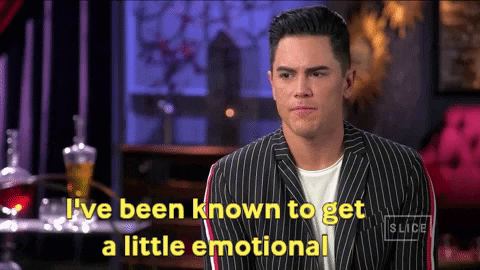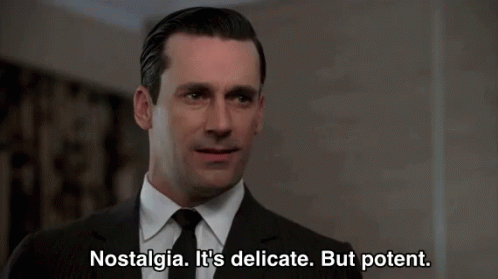🧙 4 psychological tricks of brands
The tricks brands use to influence our purchasing decisions and how we can also use this for sustainable behavioral change.
Hi 👋 I’m Florian Schleicher. This is the FutureStrategies newsletter of FUTURES. Thank you so much for reading along 💚 If you want to learn strategic marketing from me, then my Simple & Sustainable Marketing Academy is the perfect fit for you.
What do brands do to us?
Last time in the Magic of Great Brands I already talked about trust and feelings that successful brands can trigger in consumers.
And there are some very exciting aspects and changes I will dive into here to take a look at the psychology and tricks behind brands.
Or as Emily Heyward in her book “Obsessed” wrote
“There’s the part that people can see (important), and then there’s the part they feel (more important!).”
By that I mean what we know about human behavior and decision-making processes that drive our brains.
I really like stories, so I want to tell you one here. Our story starts with the classical theory of economics.
For a long time, this assumed "homo economicus". A theoretical concept that describes humans as rational and egoistic actors in economic decisions.
In this model, it is assumed that people always try to maximize their utility and to achieve goals under given conditions.
People, according to the model, make decisions based on logical reasoning. Thus, there is no influence of emotions or irrational thoughts. Homo economicus is also considered perfectly informed, meaning that he knows all available information and is able to make rational decisions that maximize his personal utility.
This model has played a long and important role in classical economics, being used as the basis for analyzing markets and economic decisions. It allowed economists to simplify complex phenomena and develop mathematical models to understand the behavior of individuals and firms in an economic environment.
However, there was a problem:
The homo economicus model may work well in economic equations, but in the real world it is a caricature of human nature.
It's based on the assumption that we're all just selfish, rational beings, constantly striving to maximize our own utility.
But the reality is different.
Humans are complex, social beings, irrational, and often shaped by emotions and social influences.
We are not perfectly informed robots, concerned only with our own advantage.
We act not only according to our own interests, but also according to the expectations and norms of our environment.
So the model completely ignores the role of emotions in our decisions. Emotions often influence our behavior much more strongly than rational considerations. Our purchasing decisions, our loyalty to brands, and our relationships with other people are often determined by our emotions.
In the real world, we cannot simply assume that people always seek their own benefit. We must accept the complexity of human nature and adapt our strategies, models, and theories accordingly.
Otherwise, we can never truly understand how people act and how we can better shape the economy and society.
And one who has done a lot of pioneering and understanding work on a new model in this regard is behavioral economist Richard H. Thaler. His groundbreaking studies that earned him, among other things, a Nobel Prize in Economics .
He has shown and proven that people often act irrationally and are influenced by cognitive biases. We make decisions based on heuristics and biases that are not always rational.
Want a few examples? Here are four approaches from Thaler including the tricks of how companies work with them:
⚓️ The Anchor Effect
In this approach, people are strongly influenced in their decision-making by a previously presented "anchor," even if it is completely irrelevant. Thaler and his colleague Amos Tversky showed in a study that people who were first presented with a high number as an anchor offered higher amounts of money for products and services than those who were presented with a low anchor value.
So imagine you want to buy a new smartphone and go to the electronics store. There you see two models that have similar functions, but different prices. The first model costs 800 euros and the second costs 1,200 euros. Although you didn't plan to spend that much money before, the high price of the second model acts as an anchor. Suddenly, the first model seems cheap at 800 euros, although it is actually still expensive.
🔎 The loss-aversion effect
A second example is the "loss aversion effect." Thaler observed that people fear and avoid losses more than they seek equivalent gains. As a result, people are often risk averse and prefer to hold on to what they have rather than pursue potential gains.
Imagine you bought an expensive pair of sneakers a long time ago that you haven't worn in months and they're gathering dust in your closet. Now you want to sell them, but when you think about the selling process, you feel uncomfortable. The loss aversion effect causes you to be emotionally attached to the sneakers and not want to sell them for less money than you paid at the time, even though you never wore them and they are no longer of any use to you.
🚂 The nostalgia effect
In a study on the "Endowment Effect," Thaler found that people tend to place a higher value on things they already own compared to things they don't yet own. As a result, people often overcharge for their own items when they want to sell them, and accept prices that are too low when they want to buy them. So this is also a lot about nostalgia.
So imagine you own an old bike that you no longer use, but it has a nostalgic value to you. When you want to sell it, the endowment effect is responsible for the fact that you may offer it at a higher price than it is actually worth. You value it higher than a potential buyer who doesn't share the same value because of your emotional attachment.
👷 The IKEA effect
This psychological effect states that people tend to place a higher value on things they have created or put together themselves than comparable products they have simply purchased. The IKEA effect is based on the principle of "ownership bias" and plays an important role in behavioral economics. It illustrates how our perception and valuation of things is influenced by our personal involvement and experiences. Companies like IKEA have recognized the effect and use it cleverly to give customers a stronger bond with their products and thereby also increase customer loyalty.
A classic example of the IKEA effect is when you assemble a piece of IKEA furniture yourself. Through your own effort and the effort put into the assembly, you develop an emotional connection to the piece of furniture. This leads you to perceive the self-assembled piece of furniture as more valuable and meaningful than a similar piece of furniture that was bought already assembled.
🪄 The psychological tricks of brands
Fascinating, isn't it? All these study results show that people often act irrationally and are influenced by cognitive distortions. So we need to understand people deeply if we want to successfully build brands and do marketing ourselves.
There are an incredible number of studies and schools of thought on the psychology of brands. From so-called "nudges" - subtle incentives that steer people's behavior in a certain direction, to the principle of social proof, which states that people tend to take their cues from others and use the behavior of others as a guide for their own actions, to the role of the limbic system, which is responsible for emotions and motivation.
💚 Manipulation for more sustainability
Can we use these insights for good? Not only to sell more and increase our profit as a company, but also to promote sustainable behaviors?
Ernesto Rincón from SAP writes about some first ideas in his article here:
“For example, some utilities and energy companies include a happy face on the bill if the customer is using less energy than the average of their neighbours, graphically persuading consumers to keep doing things right.”
Sounds simple enough, or?
A more elaborate example addresses the principle of the loss aversion effect from earlier:
“Not losing” makes us happier than “winning”.
Imagine you go to a coffee house and order a coffee-to-go. You can often get a discount if you bring your own container. However, this does not appeal to enough people psychologically.
The more effective way is to lower the coffee-to-go price in general. And each person who does not bring their own mug has to pay extra.
The same effect, only suddenly we are much more committed to acting sustainably.
With the title “Behavioral Economics and Climate Protection” Dr. Dominik H. Enste and Jennifer Potthoff from the German Economic Institute examined how nudges can also be used on a large scale to promote sustainability.
Whether big or small - psychological tricks from behavioral research can help us create a future in which we all continue to enjoy living:
“In the real world, humans do not always behave in perfectly rational ways, something behaviourally informed policies and programs take into account, helping people, organizations, communities, and countries translate intention into action”
Behavioural Science Advisor Dr. Lori Foster
A nice example at the end: Many are calling for a tax on CO2, also known as a “carbon tax”. The psychological problem is that people don't like "taxes" as a word. Who likes to pay them? And what exactly is CO2? Nobody can really grasp that.
The two countries New Zealand and Canada cleverly solved this: There is a “price for environmental pollution”. And the term sounds completely different for everyone. Who is against introducing a price for pollution?
We need behavioral changes on a large and small level in order to master the current crisis successfully and together.
And psychological tricks can help us to build good brands strategically and sustainably.
Thanks for reading along!
☀️ Something good ⚡️
Energy prices are falling in Europe due to the increasing use of solar systems. The extreme heat in the summer of 2023 could have triggered a bottleneck in the grid due to the increased energy demand, which not only covered the demand with solar energy, but also generated surpluses.
The incredible potential of solar energy is also reflected in investments: Last year, 414% more was invested in solar start-ups.
🌱
PS: You can also read this posting in German.









